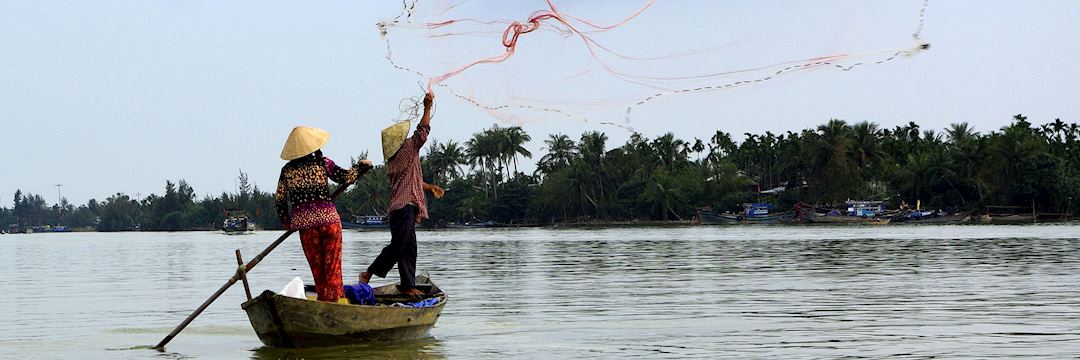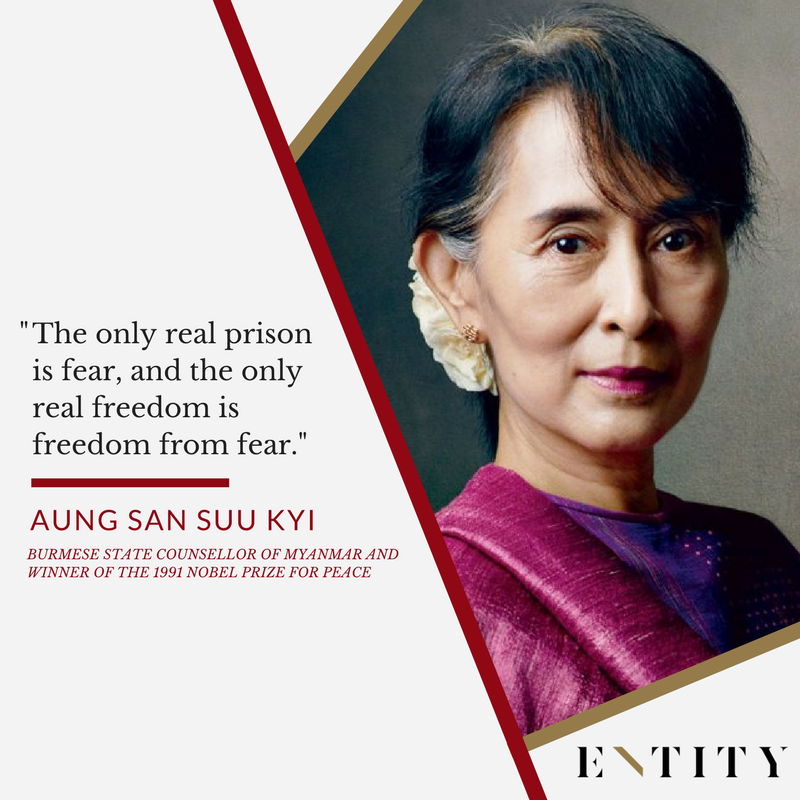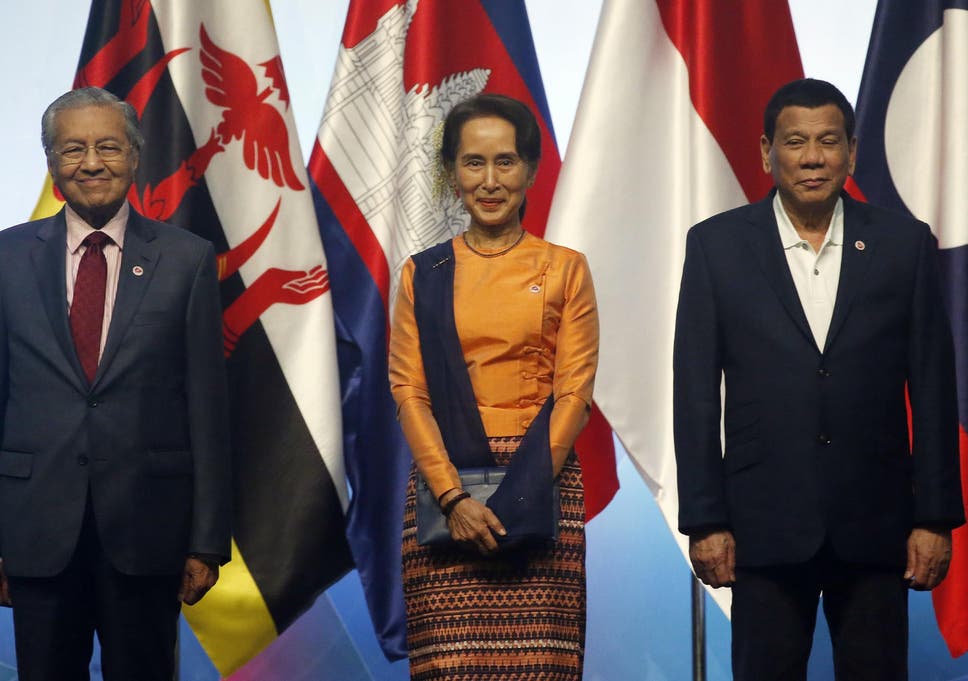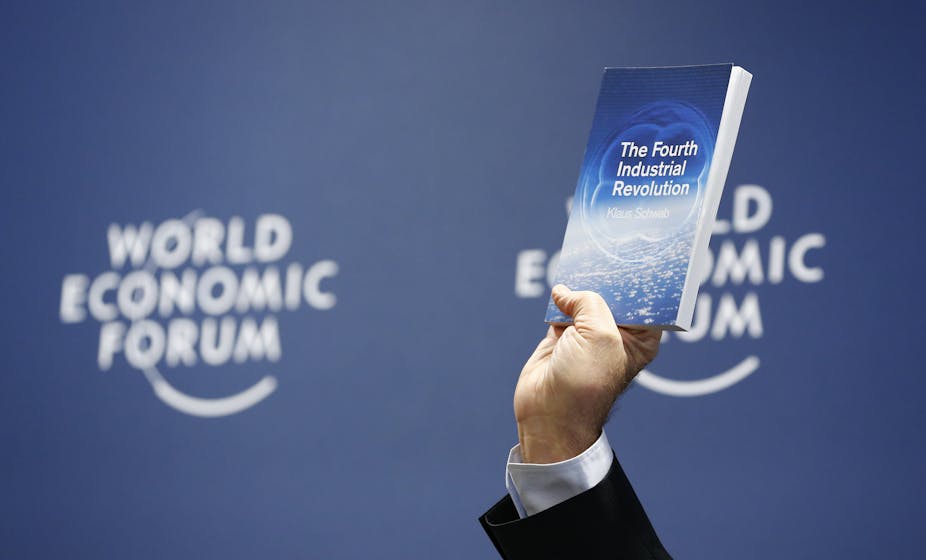March 16,2019
Cambodia: Emerging from the Shackles of History in relations with Thailand, Vietnam and China
By Kimkong Heng and Veasna Var
Kimkong Heng is a doctoral candidate at the University of Queensland and a recipient of the Australia Awards Scholarship. Veasna Var is a doctoral candidate at the University of New South Wales, Canberra and a Senior Fellow at the Cambodian Institute for Cooperation and Peace.
Cambodia has a long history. It has both a proud past and a tragic history. The country had its period of greatness during the ancient Khmer Empire, an empire which built the fabled temple Angkor Wat, one of the seven wonders of the world. Following the Angkorian era which began at the beginning of the 9th century and collapsed 600 years later, Cambodia found itself in one of the most tragic periods in its history. For almost 500 years, the country came under the enduring pressure of foreign invasion and annexation. Both Thailand and Vietnam, its stronger neighbors, annexed large parts of Cambodian territory.
Cambodia, unable to survive by itself due to constant foreign encroachment from its two more powerful neighbors, reached out to France for protection. The French protectorate of Cambodia was then established in 1863, signalling the beginning of Cambodia’s colonial period which lasted for 90 years before the country gained its independence in 1953. Following independence, Cambodia, under late King Sihanouk’s reign, saw major development in almost all areas. Unfortunately, peace was short-lived and the process of nation building did not last very long, as Cambodia soon after found itself engaged in a series of civil wars which dragged on for more than three decades.
Starting in the 1960s, the country became a Cold War battleground and involved in the Vietnam War, was bombed by the US, and later suffered an unspeakable tragedy during the Khmer Rouge regime which lasted for almost four years and killed an estimated 1.7 million Cambodians.
The Khmer Rouge genocidal regime was so devastating that it had instilled in virtually every Cambodian a strong sense of hatred, fear, and scepticism. Although Cambodia was fortunate to have survived the auto-genocidal regime, this tragic past has profound implications for Cambodia and its people.
The memories of pain which cannot be blotted out easily and which will not fade away anytime soon have been carried over to present-day Cambodia and they still haunt the new generations of Cambodians. These bitter memories, either experienced first-hand or told from the survivors, have adversely affected the minds of Cambodian people from all walks of life. Common among them are negative thoughts and feelings towards foreigners or xenophobia.
Xenophobia in Cambodia is a serious issue which should not be ignored or taken lightly. It is a critical issue that has to be addressed carefully and quickly. If not addressed properly and timely, xenophobic sentiments may lead to large-scale violence, discrimination, and hatred. One example was a violent riot against Thai embassy and Thai businesses in Phnom Penh in 2003. This incident was obviously motivated by anti-Thai sentiments among Cambodians. At that time, there were rumors that a famous Thai actress had claimed that Angkor Wat belongs to Thailand. Without knowing whether the rumors were true or not, many xenophobic and nationalistic Cambodians began a savage attack on anything related to Thai.
Thailand and Cambodia share a common culture and history. People of both countries have made numerous claims regarding past events, lands, temples, arts, dances, and more. Each side has asserted and will continue to claim as their own relevant pieces of land, elements of arts and culture, and other claimable abstract and non-abstract things, despite historical facts.
There is no doubt a deep-rooted anti-Thai sentiment among Cambodians and perhaps vice versa. Whenever something which is controversial or uncertain happens, as long as it involves Thailand and Thai people, a sense of anti-Thai sentiments, an element of Cambodia’s broader xenophobic issue, would take centre stage. A notable example is a series of fierce border clashes between Cambodian and Thai troops over the Preah Vihear Temple between 2008 and 2011. The skirmishes were sparked by a land dispute which was in turn caused by conflicting narratives of historical facts and animosity towards each other.
All decisions, measures, and approaches to solutions of issues, be it political, economic, social, or cultural, tend to be clouded by anti-Thai sentiments which seem to exist in every Cambodians of all ages and genders. They seem to lie in hibernation inside Cambodian people and just need a small trigger to come back to life and begin, in many cases, to create problems and issues that could further exacerbate an already troubled situation. The consequences of which are generally unpleasant and harmful, easily leading to more racial discrimination, hatred, and anti-Thai nationalism. This issue of xenophobic sentiments, if not taken into account properly by both Cambodian and Thai governments and relevant stakeholders, will remain and will continue to harm Cambodia-Thailand relations and prevent harmonious co-existence between Cambodian and Thai people.
The anti-Thai sentiment is just one thing; anti-Vietnamese nationalism is another, an issue which appears to be even more serious in Cambodia. It is widely believed and known among Cambodians that Vietnamese people’s intention to encroach on Cambodian land never changes. Many Cambodian people hold a perception that Vietnam is a threat to Cambodia’s territorial sovereignty. This constant pessimistic thought about the Vietnamese, the so-called anti-Vietnamese sentiment, exists in almost every Cambodians to varying degrees. Much like the anti-Thai sentiment, this hatred towards Vietnamese people lies in a dormant state until it is “awakened” by any issue or incident involving Vietnamese.
“Youn”, a Khmer word commonly used to refer to Vietnam and Vietnamese people, is arguably a pejorative term associated with anger and hatred. Khmer people often use this word instead of its equivalents, Vietnam and Vietnamese, to refer to their eastern neighbors when they are angry or want to express negative emotions about Vietnam and its people. As noted two decades ago, “forms of Cambodian racism towards Vietnam and the Vietnamese minority in Cambodia did not develop in a historical vacuum but rather developed particularly in response to the expansionist tendencies of the pre-colonial imperial state”. Apparently, almost if not all Cambodians know or have heard stories of Vietnam’s encroachment on Cambodian territory. They are all aware of the fact that many Cambodian provinces were lost to Vietnam. In particular, it is well-known among Cambodians that Vietnam encroached Prey Nokor (formerly a Cambodian territory) and institutionalized it as a city, now known as Ho Chi Minh City.
emories and knowledge of Vietnam’s encroachment on Cambodia’s sovereign territory are passed down from one generation of Cambodians to the next and are seen to be ingrained in the minds of many Khmers. Even now Cambodian people still think that Vietnam wants to “swallow” Khmer land and that Vietnam’s wish to take over Khmer territory still remains. This line of thinking is not helpful. Not only does it fuel anger, hatred and distrust among Cambodians, but it also stirs up widespread anti-Vietnamese feelings in Cambodia.
Recognizing the deep-rooted anti-Vietnamese sentiments among Cambodians, Sam Rainsy, the exiled leader of the now-dissolved opposition Cambodia National Rescue Party (CNRP), has always taken advantage of this issue and used it as part of his party’s main propaganda. As one of the authors of this analysis has argued in a recent article, anti-Vietnamese sentiments have always been a political tool Sam Rainsy and his party’s senior officials use to undermine their opponents, Prime Minister Hun Sen and his ruling Cambodian People’s Party (CPP) elites. The use of the anti-Vietnamese sentiment, another form of Cambodia’s xenophobia, is harmful, although the opposition party draws support from it. What this anti-Vietnamese rhetoric does is create tensions, division, and confrontations among Cambodians. Sam Rainsy and his party elites should begin focusing their attention on tackling other important social issues, not dwelling on using anti-Vietnamese sentiments for political gain at the expense of Cambodia-Vietnam relations and amicable existence between people of the two neighboring countries.
Moving beyond the anti-Thailand and anti-Vietnam sentiments, Cambodia still has to face other forms of xenophobia. There were memories of anti-French sentiments, particularly among older Cambodians, driven by the impact of French colonization of Cambodia. However, now there seems to be no evidence of any anti-French sentiment in Cambodia today, as all attention is given to more modern issues facing the country. Looming large are key issues such as income generation, self and family survival, education, politics, and other critical social issues.
The Cambodian government should improve law enforcement and work hard to reduce the large and growing number of unpleasant incidents such as violence, accidents, and abuses that tend to involve the Chinese diaspora living in Cambodia. The anti-Chinese sentiment has emerged from these issues.
It is particularly and surprisingly fortunate that seemingly the whole country has moved beyond discrimination and historical hatred against France whose colonization of Cambodia led to the loss of Kampuchea Krom (former territory of Cambodia) to Vietnam in 1949. Although there have been petitions demanding the decolonization of Kampuchea Krom territory, there seems to be no sign of animosity expressed towards France and the French people. Little is known why Cambodians seem to disregard the fact that the French colonialist “cut” Kampuchea Krom and gave it to Vietnam, despite numerous protests from Khmer Krom activists in Cambodia and abroad. However, that Kampuchea Krom was ceded to Vietnam by the French has obviously further intensified anti-Vietnamese sentiment among Cambodians.
Moving forward, two issues remain which could potentially become new forms of xenophobia in Cambodia, if not addressed properly and in a timely manner. The first is the incumbent government’s recent reiteration of the US bombing of Cambodia in the late 1960s and early 1970s that contributed to the rise of Pol Pot and the Khmer Rouge which took control of Cambodia in 1975 and immediately proceeded to decimate the country and its people, wishing to create a pure, self-reliant, and sovereign Khmer nation. Hun Sen and his team’s criticism of the United States, although offering short-term benefits to their party, is also harmful. It may over time develop a sense of hatred and ill will towards the US and American people, potentially creating another form of xenophobia in Cambodian society, that is, anti-American sentiment among Cambodians, particularly those who support the current ruling party.
In reality, history is history; it can neither be denied nor changed. However, it is much better to learn from past lessons to plan for the present and future rather than let the past control the present and dictate the future. The ruling elites of the CPP, in this regard, should move beyond their recent narratives of the “US bombing” and, like the CNRP, should direct their attention to resolving pressing social issues facing Cambodia. Repeating and promulgating the damage that the US inflicted on Cambodia in the 1970s will not benefit Cambodia and its people in the long run. It only exacerbates the current poor relations between the US and Cambodia, which is certainly not a viable foreign policy option for the latter.

The second issue which has arisen recently in Cambodia is the emergence of anti-Chinese sentiment which appears to be on the rise. The perceived increase of anti-Chinese feelings among many Cambodians are seen as a negative side effect of the growing Chinese presence in Cambodia, especially in the country’s coastal province, Sihanoukville. Over the last few years, Chinese investors have in large numbers flocked into Sihanoukville to invest in building casinos, apartments, theme parks, and resorts.
The Chinese’s increasing presence has implications for the Cambodian province and Cambodia at large. Not only can one see the mushrooming of high-rise buildings, casinos, restaurants, and other businesses run by the Chinese immigrants, but one can also experience or at least feel an increase in crime, violence, drug trafficking, and pollution, in the once-sleepy coastal province. There are frequent reports in the news about violence, abuses, scams, cybercrime, and violations of expected social norms and rules of law, many of which involve the Chinese living and working in Cambodia and in Sihanoukville in particular. Until October 2018, for example, 1,649 Chinese nationals were deported from Cambodia for scams and cybercrime offenses. These many incidents, together with similar stories happening in other countries, have arguably contributed to the emerging rise of anti-Chinese sentiments among the general public in Cambodia.
This new issue of anti-Chinese nationalism may not be seen as a serious issue now, but if left to develop freely and not addressed properly and timely, it is likely to lead to a big problem, consequences of which is less predictable and should raise concerns for the Cambodian government and Cambodian people. It is the duty and responsibility of the current ruling government of Cambodia to find ways to address the issue while it is still in the early stages. Although the Cambodian government, especially the ruling elites, has significantly benefited from Cambodia’s close relationship with China, it is wise to diplomatically bring this issue to the discussion table and work towards collaborating with the Chinese government to tackle this rising anti-Chinese sentiment among the Cambodian populace. It is always a good idea to make big problems small and small problems even smaller. To do so, the Cambodian government, with support from its Chinese counterpart, has to do something to deal with this emerging issue.
Xenophobia in Cambodia, whether it is a long-standing issue like anti-Thai and anti-Vietnamese sentiments or a new one like anti-Chinese sentiment, is a critical issue that needs to be addressed properly and taken more seriously than it currently is. As has been argued, Cambodian youth have crucial roles to play in improving Cambodia-Vietnam relations. Youth are the backbone of the country and the future of Cambodia. They are “Cambodian ambassadors in the making who are responsible for raising the profile of Cambodia in the region and the international stage”. They can contribute to navigating the Cambodian ship as long as they are given chanced and their efforts are recognized and valued. Thus, engaging youth in all realms of political, economic, social, and cultural life, for example, is important and is what the Cambodian government should strive for.
Cultivating and nurturing mutual respect, understanding, and tolerance between people of all nations involved is also crucial. In the case of Thailand and Vietnam, prevalent racial hatred, contempt, and discrimination resulting from awful past history and recent events can probably be minimized through the cultivation of genuine and mutual respect between Khmer and Thai people and between Khmer and Vietnamese. With respect to improving Cambodia-Thailand relations, one of these authors has also argued in an article in the IPP Review for the important role of mutual respect and the role of Cambodian youth in shaping Cambodia’s relations with Thailand. As it is argued, Cambodian people, youth in particular, “should not dwell on their dark history; instead, they should use lessons from history to help them make informed and impartial judgments when dealing with issues concerning Thailand and its people”.
However, these cannot be done without support from the Cambodian government as well as governments of Thailand and Vietnam. All parties have vital roles to play in fostering and improving their respective relations. Efforts, commitment, and cooperation at all levels, individual, institutional, and national, are essential. These are important steps towards fostering good relations between these countries which have regarded each other as one’s own traditional enemy.
With respect to the US, the Cambodian government should stop using the rhetoric of US bombing of Cambodia. While it is true, it only worsens Cambodia’s relations with the world’s largest economy. Although Cambodia has great relations with China, its largest economic and military benefactor, it would be unwise to alienate the US and fully embrace China. The most viable approach or way forward for Cambodia is to make as many friends as possible. It is undeniably true that having two best friends, the US and China, is absolutely better than having just one friend. All Cambodian eggs should be placed on two or more baskets, not just one basket. It is safer and more secure that way.
On the issue of anti-Chinese sentiment, Cambodia should take it into account most seriously. Now it seems to be not an issue yet but it will be a problem, a big one, if no due attention is paid to it. Recently, Prime Minister Hun Sen has urged and assured that many Chinese immigrants who are working in Cambodia, particularly in Sihanoukville, will leave the country once the Chinese projects for which they work are complete. This assurance is helpful but not sufficient. The Cambodian government should improve law enforcement and work hard to reduce the large and growing number of unpleasant incidents such as violence, accidents, and abuses that tend to involve the Chinese diaspora living in Cambodia. The anti-Chinese sentiment has emerged from these issues. Addressing them would also address the recently growing anti-Chinese feelings among the Cambodian general public.
Finally, xenophobia in Cambodia is a major social problem that requires absolute attention from all stakeholders in the country. It is neither the job of the government nor the duty of Cambodian citizens alone. It is a critical issue that requires cooperation, commitment, understanding, and willingness from all parties, regardless of their political views, positions, or beliefs. Cambodian xenophobia and paranoia, no doubt, have a malign influence on Cambodia’s efforts to promote the Kingdom’s integration into the region and the world. It will definitely damage the image of Cambodia on the global stage in the long term.
It is time for Cambodians, the ruling elites and the ordinary people, to work together in unity and in harmony to solve key issues facing their country. As a saying goes, “God helps those who help themselves”. Thus, Cambodians must work collaboratively and willingly to help themselves and their country.















